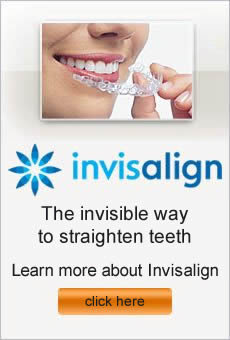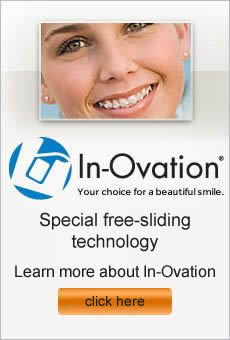While most people want to close gaps between their teeth, a new trend is emerging in the fashion industry. Models with a diastema, the term used to describe the space between two teeth, are considered in vogue. In fact, the top faces for companies like Calvin Klein and Chanel have considerable gaps between their teeth.
Approximately 50 percent of kids ages six to eight have an opening between their teeth. Usually, the space closes after permanent teeth erupt. If the diastema remains after the permanent incisors and canine teeth come in, you should consult an orthodontist for further evaluation. The most common diastema is the space between the front teeth.
Other conditions can also contribute to gaps between teeth, including:
- Missing teeth, which may create extra space
- Lip biting because it can enable front teeth to drift apart
- Tongue thrusting, pushing your tongue against front teeth, may result in a gap
- Abnormal jaw bone structure may prevent the upper incisors from touching normally
Though certain celebrities have left the openings in their smiles, the average person will need orthodontic treatment to close the gap. After a complete assessment, your orthodontist can recommend the best treatment. Braces can be used to move teeth together and create a flawless smile. Orthodontic treatment of a gap between teeth will provide a permanent result, but it can take a year of longer to work, especially in the case of larger spaces.
Orthodontist in Sherman Oaks CA
Unlike traditional methods of straightening your teeth, the innovative technology of Invisalign allows orthodontic patients to obtain a beautiful smile without all the hassles. Invisalign straightens your teeth and aligns your jaw with very little impact on your daily lifestyle. This type of orthodontic treatment offers advantages that other treatments cannot.
Appearance
One of the most obvious benefits of Invisalign is the fact that there are no wires or permanent appliances in your mouth. Instead, a series of removable clear aligners are worn over your teeth that are virtually invisible. You will not attract unwanted attention to your mouth when wearing Invisalign.
Comfort
The aligning trays are customized for your mouth, and progressively straighten your teeth without the need for unpleasant metal brackets and wires. Invisalign provides a relatively comfortable way to straighten your teeth without the irritation of traditional braces.
Removable
The fact that the aligners are removable is an appealing benefit. This allows you to remove them for important occasions like events or pictures. Keep in mind that the trays should be worn as much as your orthodontist advises for ideal treatment, but removing the appliances for certain occasions is possible.
No food restrictions
There are no restrictions about the kinds of food you may eat during treatment. You can still enjoy your favorite foods without risk of breaking wires or getting food particles lodged in your braces.
Oral care
Taking care of your teeth and gums is easy with Invisalign. You simply take out the aligners to brush and floss as usual. Also, there is no worry about food becoming caught in your braces. This helps alleviate the concerns of excessive tooth decay, bad breath, and other dental hygiene issues.
Invisalign dentist in Sherman Oaks, CA – schedule an appointment today with an Orthodontist for your Invisalign.
Approximately 10 percent of adults clench or grind their teeth. Symptoms of clenching and grinding, also called bruxism, include headaches, jaw pain, and cracks in teeth. If you or a family member grinds your teeth, you can cause serious damage and discomfort.
These facts about bruxism will help you learn more about this condition:
You can hurt more than just your teeth
Most of the time, clenching and grinding is mild. In more severe cases, you can aggravate the jaw joints and cause TMJ-like symptoms. Mention any concerns you have to your orthodontist or dentist so that you can get proper treatment.
Bruxism and stress are connected
Feeling anxious or frustrated may contribute to bruxism. Currently, no one has identified all the factors that make people grind or clench their teeth. Certain competitive behaviors or personality types may increase the chance of teeth grinding.
It can happen at any age
Though you may not have issues with bruxism, you could develop them at any point in your life. In fact, children typically grind their teeth more than adults. Usually, they out grow bruxism by adolescence.
You may not realize you have an issue
Because bruxism often occurs while you sleep, many people don’t realize a problem exists. Earaches, headaches, unexplained facial pain, or tenderness around the jaw joints could indicate issues with clenching and grinding.
Treatment is available
Often, bruxism is mild enough that you don’t need treatment. If you do need therapy, your orthodontist or dentist can fit you for a mouth guard, a plastic appliance that covers teeth and eliminates damage from bruxism.
Dr. Fotovat is an Orthodontist in Sherman Oaks CA
Cleaning your teeth while wearing braces is one of the most important parts of the experience. If you don’t remove food particles and plaque buildup, you run the risk of tooth decay, staining, and bad breath. Follow these tips for keeping your mouth clean and sparkly.
1. Brush, brush, brush!! Make sure you focus on every single tooth, especially the places where your braces and teeth meet.
2. Clean every side of your teeth. Brush the fronts, backs, and chewing surfaces. Don’t forget your gum line because plaque likes to hide there.
3. Angle your brush. Brush the top teeth and braces with your toothbrush angled down, and brush the bottom teeth and braces with your toothbrush angled up. This gives the bristles access to the areas where food tends to get caught above and below your braces.
4. Brush after eating. No matter if it’s a full meal or a light snack, food can get trapped in your braces and lead to decay. The longer the food is there, the greater your risk of plaque formation. Brush after eating, or rinse your mouth with water if you can’t brush.
5. Be prepared. Bring toothbrush, toothpaste, and floss with you so that you can brush no matter where you are.
6. Use fluoride. Choose fluoride toothpaste and rinse with fluoride mouthwash, which will both help prevent cavities.
7. Remove the accessories. If you have headgear or elastic bands, take those off before brushing or flossing.
8. Consider options besides just dental floss. You may find it easier to use a floss threader, or Superfloss that is a combination of regular floss and threaders.
9. Get to the point. Cone-shaped brushes with pointy ends are designed to reach areas around your braces that toothbrushes can’t.
10. Don’t forget your dentist. Go for regular dental checkups to get professional, thorough cleanings.
Dr. Fotovat is an Orthodontist in Sherman Oaks, CA
Most problems that happen with your braces or other orthodontic appliances can be treated as soon as you can schedule an appointment with your orthodontist. You should contact their office if you have severe pain or a painful problem with your appliance that you can’t remedy yourself. In the meantime, there are some solutions you can try that offer temporary relief until you can get into the office. Here are some common problems that occur with appliances, and solutions that may help.
Loose bracket or band
Leave the bracket or band in place if it’s loose but still attached. Place some wax on it to hold it steady. If the bracket or band falls off completely, wrap it in a tissue to take with you when you see your orthodontist.
Loose wire
Try using tweezers to put the wire back in place, and cover it with wax. If neither of these help, use a fingernail clipper to trim the wire after the last tooth to which it’s attached. Place wax over that until you see your orthodontist.
Loose appliance
Place wax over any part of the appliance that is loose and poking you.
Poking wire
Use a pencil eraser to push down the wire that is poking you, or place wax on it so it’s not uncomfortable.
Headgear discomfort
If you haven’t been wearing your headgear as instructed, that may be causing your discomfort. The more you wear it, the more comfortable it becomes. If any portion of it is bent, such as the facebow, call your orthodontist.
Soreness
It is normal for your mouth to feel sore for the first three to five days after getting braces. Rinsing your mouth with warm salt water may help, as does taking ibuprofen or other over-the-counter pain reliever.
Burbank Orthodontist



